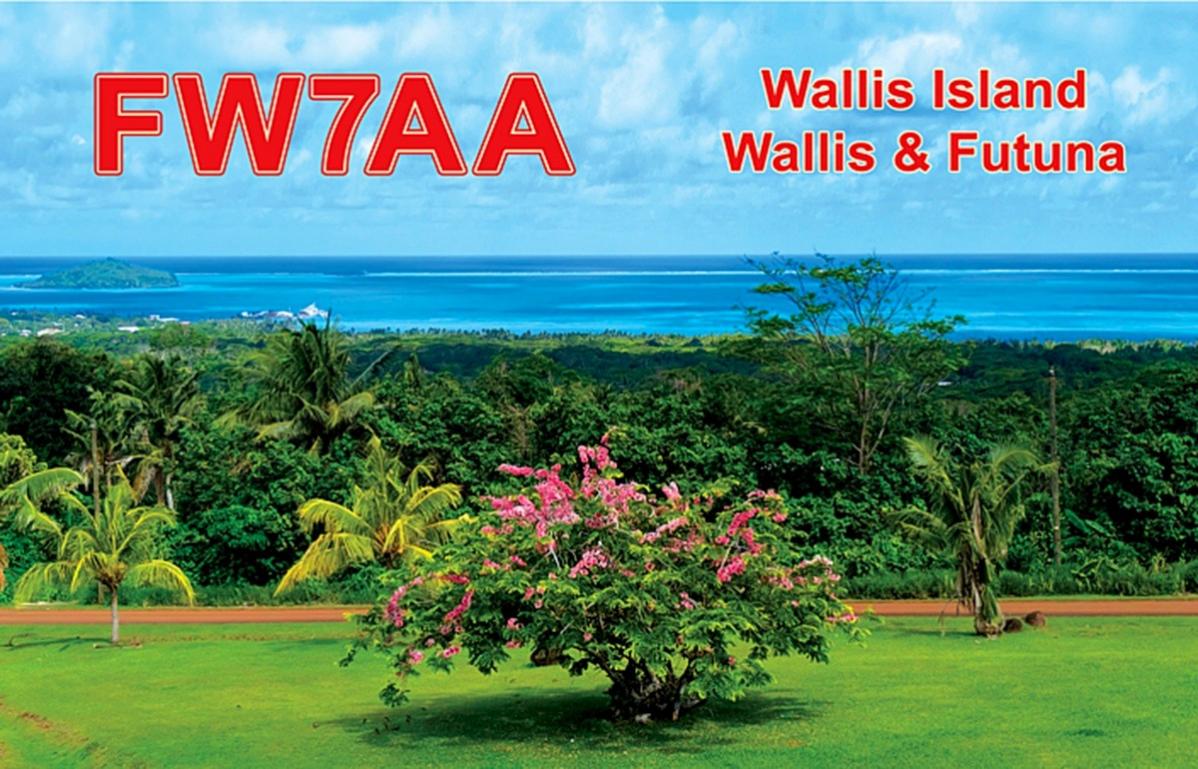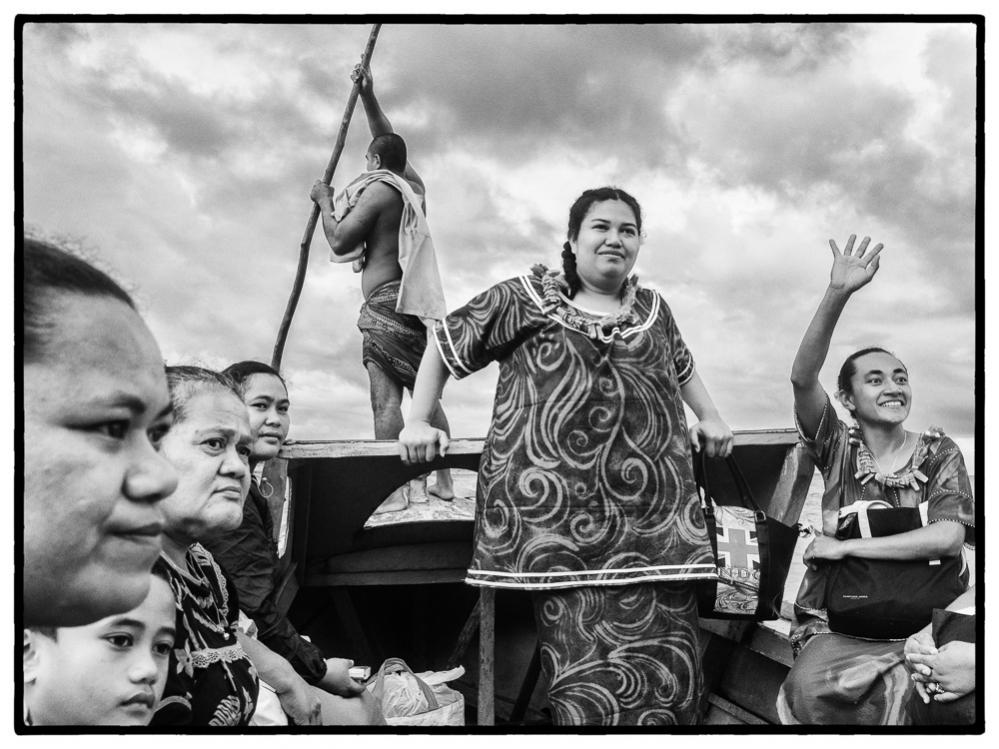FW7AA Team will be active from Wallis Island, IOTA OC - 054, Wallis and Futuna, 16 - 29 November 2024.
Team - Bob, W7YAQ and Al, K7AR.
Recent DX Spots FW7AA
FW7AA Log search They will operate on HF Bands.
QSL via W7YAQ, LOTW, ClubLog OQRS.
QTH - Vaimalau, Wallis Island.
Wallis and Futuna Islands: in the heart of the Pacific Ocean
Safely tucked away in the Pacific Ocean, the Wallis and Futuna Islands are perhaps the furthest territory from its official capital. Paris and the tiny archipelago are separated by 16,000 kilometers. The paradise place is still very far from mass tourism, so the nature, culture, customs and gastronomic traditions of the indigenous population of Oceania have been preserved here almost in pristine condition.
 Wallis Island, Wallis and Futuna. Author - Adrian Turner.
Wallis Island, Wallis and Futuna. Author - Adrian Turner.
Geography and climate
The islands of Wallis and Futuna belong to the “Polynesian triangle” - they are 300 km from Fiji, 370 km from Samoa, 2,100 km from Caledonia and 2,800 km from Tahiti. The area is commonly referred to as an archipelago consisting of three atolls - Wallis, Alofi and Futuna. Although geographically the definition is not quite correct. The islands are separated by an impressive 230 kilometers, they have never been historically and physically attached to each other. Despite this, geographers divide the territory into two groups:
- Wallis - one main island with the capital Mata Utu, lagoons and a dozen coral atolls.
- Horn - the islands of Futuna and Alofi. Futuna is divided into two parts, Sigave with a jetty and Alo with an airport.
All the islands are of volcanic origin. Wallis Island appeared in the Cenozoic era (66 million years ago), the atolls in the lagoon are quite young - 300,000 years old. The terrain is low-lying, with the highest point being Mount Lulu Fakahega at 151 meters. Futuna is more mountainous. The summit of Puke (524 meters) gradually descends to the ocean, forming a complex and picturesque terrain.
The climate of the islands is tropical, humid, with no abrupt change of seasons. The temperature is constant all year round, varying between 25-32°C, monthly precipitation varies from 150 to 400 mm. The cool period with moderate trade winds lasts from May to September. From October to April, the islands experience hot weather with frequent rainfall.
 Wallis and Futuna. Author - Mark Josept Jochim.
Wallis and Futuna. Author - Mark Josept Jochim.
History of the islands
Wallis (Uvea) and Futuna were settled 3,400 years ago by peoples of the Lapita civilization. From the 15th century, the Wallis were inhabited by the Tonga people, who established a hierarchy of authority of “chiefs” that is still in place today. Europeans visited the islands in 1616. Dutch sailors were able to miraculously overcome a coral reef and reach Futuna. In 1767, Samuel Wallis reached the island of Uvea and gave it his name. The first westerners to settle permanently on the islands were missionaries. Since 1837, they had been evangelizing the indigenous population. In 1842, Wallis converted completely to the Catholic faith. Futuna joined Christianity in 1846.
A protectorate treaty with France was signed in 1888. Despite this, Wallis and Futuna were never colonies. From 1942 to 1946, the U.S. Army occupied Wallis and made significant contributions to infrastructure. Roads, marinas, and airports are still in use today. In 1959, a referendum approved the annexation of Wallis and Futuna Islands to France. The decision came into force in 1961.
 FW7AA. Wallis and Futuna Islands. QSL Card.
FW7AA. Wallis and Futuna Islands. QSL Card.
The universe of Wallis and Futuna Islands
The islands are, in every way, a unique place on the planet. Untouched by the tourist industry, the archipelago has managed to preserve its pristine nature and unique Polynesian culture. Single travelers are greeted with smiles, hospitality and flower necklaces. The islands' rich history (ties to Tonga and Samoa, evangelization, American occupation, incorporation into France) has been carefully preserved in architecture and cultural traditions.
Natural attractions on the islands are represented by crater lakes, in particular one of the largest in the Pacific Ocean - Lalolalo and the beautiful Wallis lagoons, with 13 uninhabited paradise atolls. In just ten minutes you can reach pristine beaches, turquoise waters and a magnificent coral reef, a true dream for every diver. Mount Puke makes a powerful impression with its picturesque landscapes, diverse flora and fauna.
Archaeological and historical monuments on the islands are represented by the magnificent heritage of the Lapita civilization, the Tongo people and the developed infrastructure of the Americans. Tourists primarily visit:
- cannibal oven on Futuna;
- Loka Cave on Alofi;
- the Poi Basilica, site of the assassination of Oceania's only saint, Pierre Chanel;
- the volcanic stone Mata Uta Cathedral;
- St. Joseph's Church;
- the fortress city of Talietumu.
The islands' many churches are well-maintained, decorated with flowers, always crowded as much as possible with a population of 11,000. The original traditions and customs make you fall in love with the lost world forever. It is here that you can witness and participate in the catoaga ceremony, a half secular, half religious event that involves drinking the famous cava. Watch the work of artisans whose art has been carefully preserved for centuries and, of course, try the national cuisine, based on coconut milk, seafood and pork.
 Wallis and Futuna. Author - Christian Neumuller.
Wallis and Futuna. Author - Christian Neumuller.
Curious facts
Tourism is not developed at all on the islands. There are only four hotels with 26 rooms each. Restaurants are proudly called roadside eateries, and there is no public transportation. Cabs did not take root on the islands because the locals categorically did not want to pay the fare, and tourists are so few that they do not cover the cost of maintaining cars.
The French authorities are pushing hard to encourage settlement of the island. One of the social measures offered as part of the demographic program is an increased salary. Teachers, doctors, researchers, civil servants, who wish to work in Paradise, can expect to be paid 2-3 times more than on the mainland.
It is very difficult to get to the islands. And the matter is not even in the distance, but in the lack of developed transportation infrastructure. For example, airplanes to Fiji depart from the local airport only once a week. And there is a high probability that the flight will be canceled due to cloudy weather.
Wallis and Futuna are extremely interesting for active travelers who are not afraid of the difficult road, long distances and the possibility of being stuck on the islands for an indefinite period of time. In return, you can fully enjoy unspoiled lagoons, crater lakes and bizarre landscapes. We can only wish you a happy exploration of unspoiled lands while the opportunity exists.

